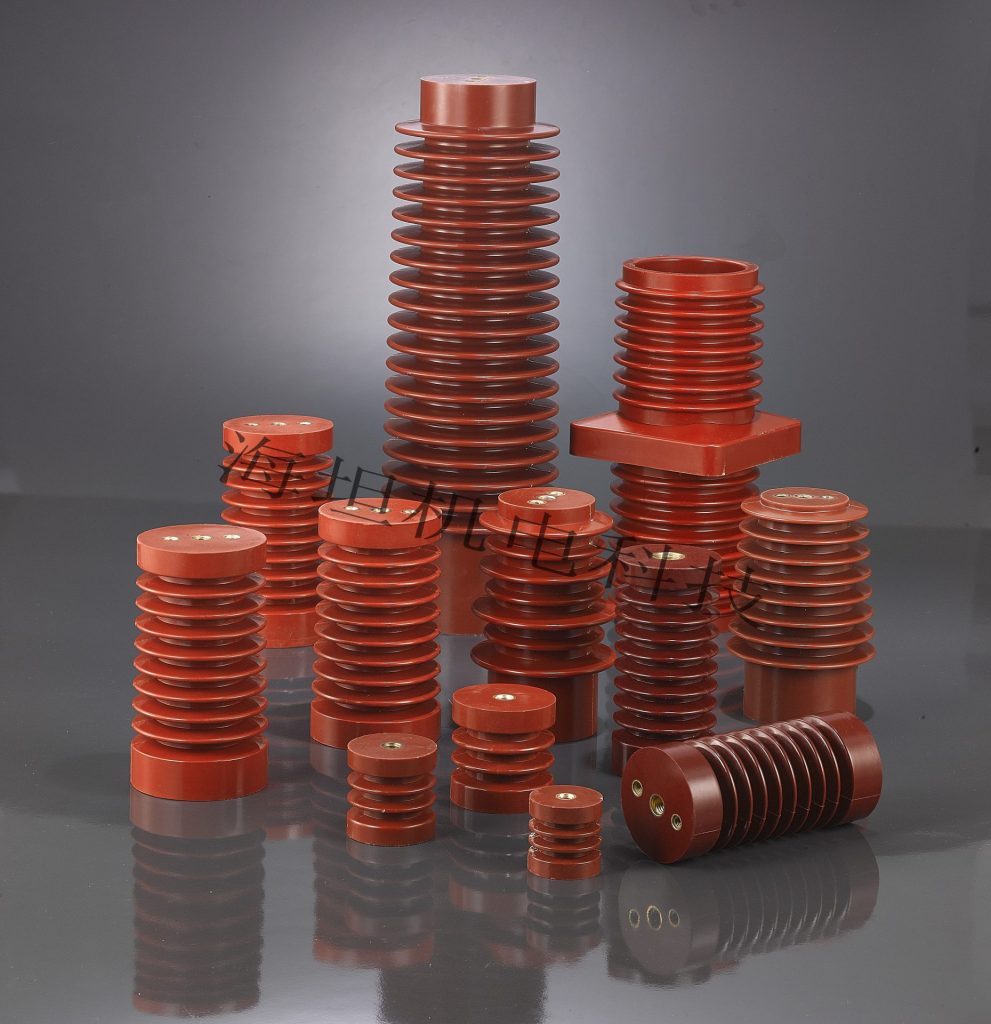Тэндэнцыя развіцця і працэс стандартызацыі ізалятараў DMC
Блог | Рэдакцыя | Каст 15,2025
Introduction
In modern electrical systems, DMC Insulators (Dough Moulding Compound Insulators) play a crucial role in ensuring reliable insulation and mechanical strength, especially in low-voltage distribution systems. As industrial automation and power safety standards advance, DMC Electrical Insulators are increasingly favored for their excellent electrical properties, durability, and cost-effectiveness.
Understanding the development trend and standardization process of DMC insulators is essential for manufacturers, engineers, and decision-makers aiming to achieve consistency, safety, and global competitiveness in their electrical products.
Evolution of DMC Insulators
Early development of DMC (Dough Moulding Compound) technology
DMC technology originated in the mid-20th century as an innovative molding material combining unsaturated polyester resin, glass fiber, and mineral fillers. Its balance of electrical insulation, heat resistance, and dimensional stability made it an ideal choice for electrical insulators and switchgear components.
The development of DMC Insulators marked a significant step forward from traditional ceramic or thermoplastic insulators, offering lighter weight and easier mass production.
Comparison of DMC vs SMC Insulators
While both DMC (Dough Moulding Compound) and SMC (Sheet Moulding Compound) share similar base materials, they differ in form and performance. DMC Insulators are better suited for complex shapes, precision parts, and smaller electrical components due to their flowability and fine molding capability. SMC Insulators, on the other hand, are used for larger and more structural parts requiring higher mechanical strength.
From a materials standpoint, DMC Material Properties—such as high dielectric strength, low water absorption, and dimensional accuracy—make it ideal for low-voltage systems and compact switchgear applications.
Technological Advancements in DMC Insulator Manufacturing
Innovations in DMC Insulator Technology and production techniques
Recent DMC Insulator Technology developments have focused on improving material homogeneity and enhancing mold precision. Modern formulations now include nano-fillers and improved fiber dispersion, boosting dielectric and thermal properties while maintaining mechanical integrity. These innovations have allowed for better DMC Insulator Development in high-demand environments.
Role of automation and precision molding in quality improvement
Automation has revolutionized DMC Insulator Manufacturing. Robotic molding systems and computer-controlled curing processes ensure uniform quality and minimize production defects. This precision manufacturing not only enhances consistency but also supports compliance with international standards for DMC insulators.
Integration of new composite materials for better insulation performance
The integration of advanced resins and environmentally friendly fillers has resulted in DMC materials with improved strength-to-weight ratios and enhanced flame retardancy. Such innovation in DMC electrical components aligns with the growing industry demand for eco-efficient and high-performance materials.
Global Standardization Process of DMC Insulators
Overview of DMC Insulator Standards at national and international levels
DMC Insulator Standardization follows a combination of national and global regulatory frameworks. Leading standards such as IEC 60695, ISO 14687, and GB/T specifications set benchmarks for material performance, flammability, and insulation resistance. These DMC Insulator Standards ensure compatibility across manufacturers and countries, facilitating cross-border trade and application consistency.
Impact of standardization on safety, compatibility, and market adoption
The standardization process helps unify testing and certification, ensuring every Electrical DMC Insulator meets strict safety and reliability criteria. This not only builds user trust but also drives market acceptance in critical sectors like power distribution, transportation, and renewable energy.
Testing, Certification, and Quality Control
Importance of DMC Insulator Testing and Certification in ensuring product reliability
Comprehensive DMC Insulator Testing and Certification ensures the product meets or exceeds safety and performance standards. Certified DMC insulators guarantee stable operation under high electrical and thermal loads.
Common testing procedures (dielectric strength, mechanical stress, heat resistance)
Testing includes dielectric strength analysis, tracking resistance, mechanical load endurance, and heat aging performance. These tests verify DMC Insulator Quality Control during and after manufacturing.
Quality control methods during DMC Insulator Manufacturing
During DMC Insulator Manufacturing, strict quality control involves continuous material inspection, in-process monitoring, and statistical sampling. Automated defect detection and real-time data logging ensure each unit’s consistency and reliability before shipment.
Current Development Trends and Future Outlook
Latest DMC Insulator Trends shaping the electrical equipment industry
Modern DMC Insulator Trends emphasize lightweight designs, high voltage endurance, and environmental sustainability. Smart electrical systems increasingly rely on compact DMC components that balance performance with eco-friendliness.
How sustainability and smart manufacturing are influencing DMC Insulator Development
Green manufacturing practices—such as recycling DMC waste and reducing resin emissions—are shaping the future of DMC Insulators. Additionally, digital twin technologies and AI-assisted molding are becoming part of smart DMC Insulator Development strategies.
Future of DMC Insulators in global electrical infrastructure
The Future of DMC Insulators lies in their integration into smart grids, electric vehicle systems, and renewable power control units. Their adaptability and reliability position them as a foundational component in the next generation of low-voltage electrical systems.
FAQ
Q1: What makes DMC Insulators suitable for low-voltage applications?
A1: Their excellent dielectric properties, dimensional stability, and flame resistance make them ideal for low-voltage distribution systems and switchgear.
Q2: How do DMC Insulators differ from ceramic insulators?
A2: DMC insulators are lighter, easier to mold, and offer better impact resistance than ceramic types, which are brittle and heavier.
Q3: What are the main international standards for DMC Insulators?
A3: Common standards include IEC, ISO, and GB/T specifications that define insulation, thermal performance, and safety requirements.
Q4: What are the key challenges in DMC Insulator Manufacturing?
A4: Maintaining uniform fiber distribution, minimizing air entrapment, and ensuring consistent curing are major manufacturing challenges.
Conclusion
The development trend and standardization process of DMC insulators reflect the industry’s commitment to safer, more efficient, and environmentally responsible electrical solutions. From material innovation to global certification, DMC Electrical Insulators continue to evolve as essential components in low-voltage systems.
As technology advances, the ongoing focus on DMC Insulator Standardization, quality control, and sustainable manufacturing will ensure that these components remain a cornerstone of reliable electrical infrastructure worldwide
--- КАНЕЦ ---
Ужо апошні артыкул
© Аўтарскае права China Haitan Electromechanical Technology Co., Ltd., 2024. Усе правы абаронены.ПАДТРЫМКА: JUNJ Палітыка прыватнасці



